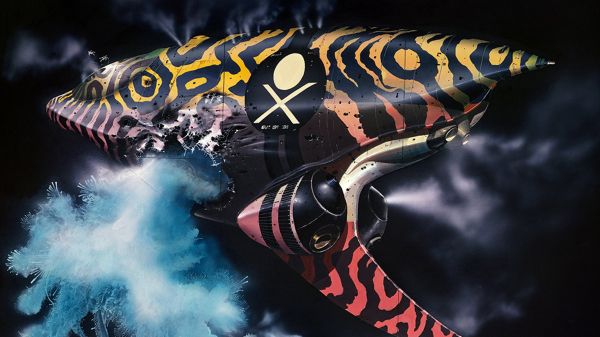Movie review by Greg Carlson
Along with Stanley Kubrick’s proposed epic “Napoleon,” a film adaptation of Frank Herbert’s “Dune” that was to be directed by Chilean-born esotericist and spiritual guru Alejandro Jodorwosky is often listed as one of the “greatest films never made.” First pitched to the cult filmmaker by French producer Michel Seydoux in the 1970s, “Dune” would fuel Jodorowsky’s imagination and consume his creative energy (and a pile of money) for many months. Director Frank Pavich, relying on the incredible contents of the legendary book that was assembled to pre-visualize the transmutation and lure studio investors, has made in “Jodorowsky’s Dune” a movie for movie fans as well as dreamers of all kinds.
Once Jodorowsky, who claims he committed to “Dune” without having read the novel, launched himself at the material like a high-dive cannonballer, he set about assembling an Avengers-like super squad of like-minded “spiritual warriors” who could help realize his kaleidoscopic vision. Pavich spends a significant amount of time investigating the production team. Several members, including longtime Jodorowsky associate Jean “Moebius” Girard, Swiss master of the macabre H.R. Giger, and sci-fi illustrator and spacecraft specialist Chris Foss, share their impressive artwork and their memories of working with Jodorowsky.
Jodorowsky’s penchant for Jungian synchronicities – he seems to have bumped into several of his dream collaborators by chance immediately after thinking about them – is a little bit too good to be true, but the man’s childlike enthusiasm excuses some of his taller tales. Additionally, Jodorowsky speaks with no filter (“You need to open the costume and rape the bride. I was raping Frank Herbert! Raping! But with love”) and his easy blending of the sacred and the profane confirms the wild image of the man who made “El Topo” and “The Holy Mountain.”
With focus squarely on the irrepressible Jodorowsky, Pavich is less interested in some of the other aspects of the convoluted journey of “Dune” from page to screen. He skips serious consideration of the text as a giant slayer, withholding mention of Herbert’s own interests in the project and the Arthur Jacobs version that David Lean planned to direct. The Ridley Scott attempt, which occurred between Jodorowsky’s involvement and the eventual David Lynch realization, is ignored even though Pavich goes out of his way (and a little overboard) to establish the vast influence of the Jodorowsky pre-production materials on “Alien” and a legion of subsequent science fiction movies.
Jodorowsky, now in his 80s, loquaciously holds forth on every detail he can recall or invent. In one fascinating anecdote, master visual effects supervisor Douglas Trumbull gets thrown under the bus in favor of Dan O’Bannon, who would end up dropping everything to move to Paris to work on “Dune.” Jodorowsky proves no less ambitious in the courtship of his on-camera talent, and his wish list includes the likes of Mick Jagger, Orson Welles (as Baron Harkonnen, of course), Salvador Dali, and David Carradine. The effect is meant to evoke an incredulous “what might have been” lament from the viewer, but it is far more likely that Pavich’s warm and funny chronicle of such a beautiful near miss/long shot burnishes a mythology more satisfying than the reality of what Jodorowsky would have been able to bring to the screen.
